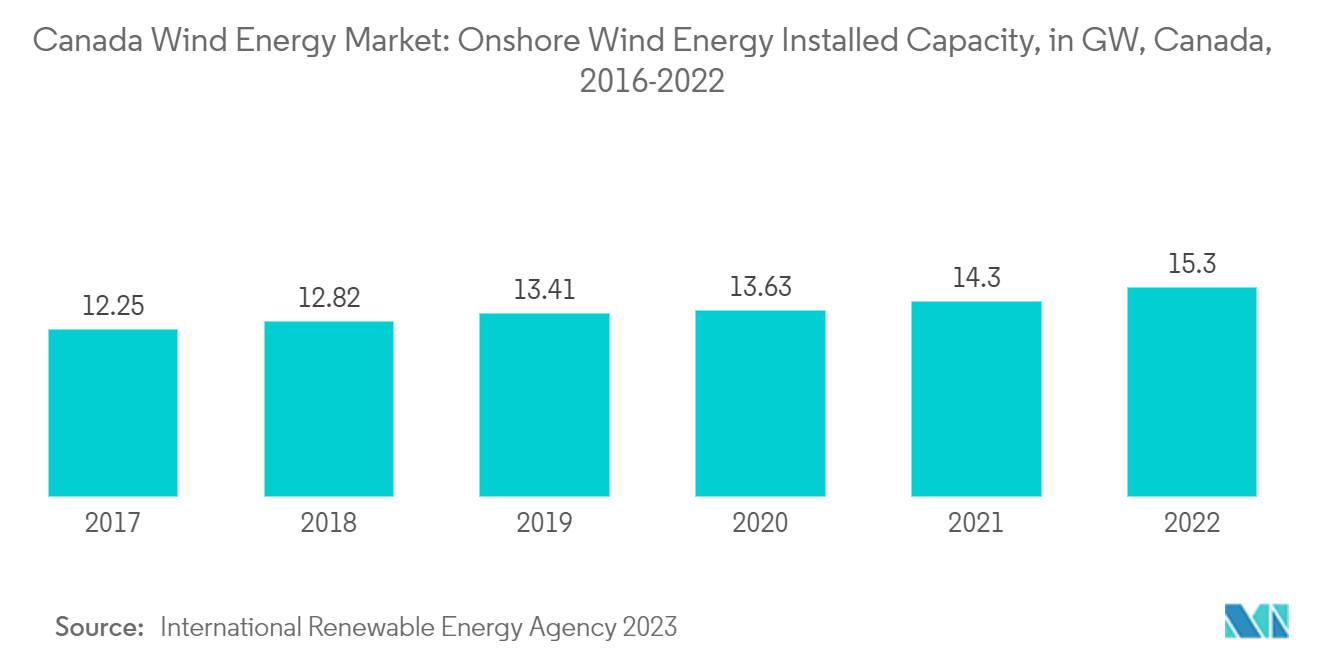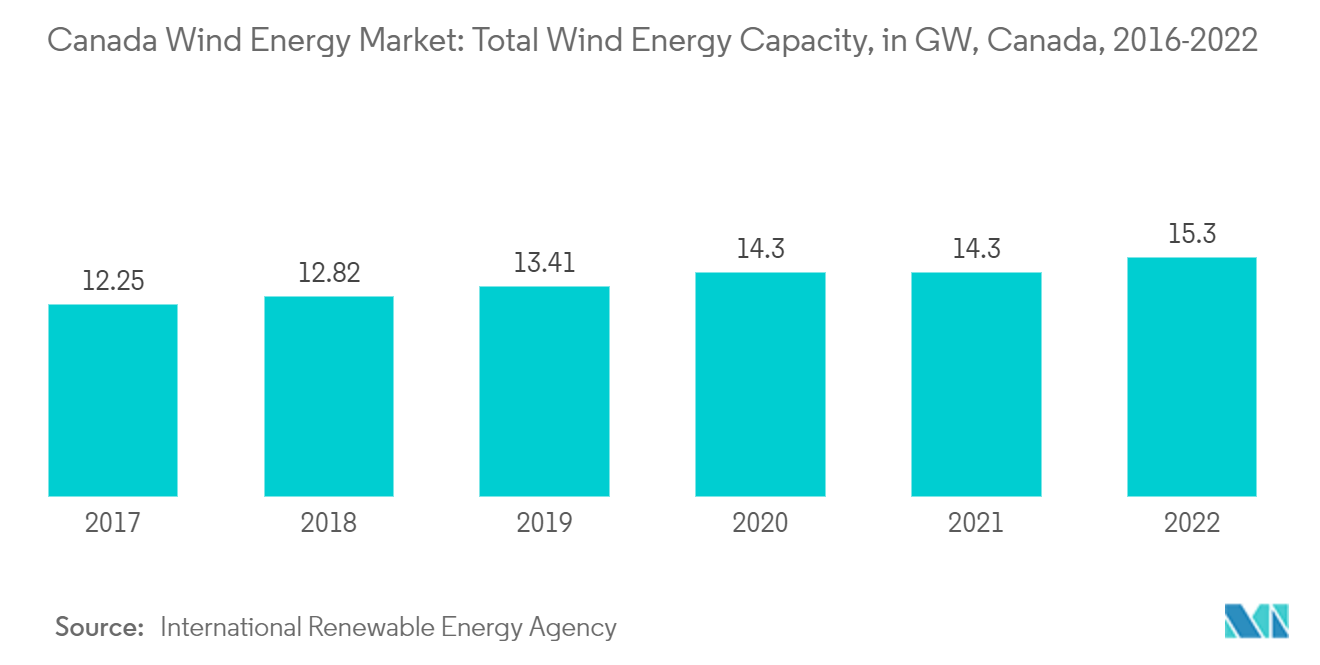Market Trends of Canada Wind Energy Industry
Onshore Segment to Dominate the Market
- Electricity from wind energy is one of Canada's fastest-growing methods of electrical generation. Canada's geography allows it to capitalize on large amounts of wind energy. Increased wind energy deployment benefits include grid-wide energy savings and reductions in greenhouse gas emissions and air contaminants (including SOX, NOX, and mercury).
- In 2022, Canada reached an installed onshore wind energy capacity of 15.295 GW. All of the new wind capacity added in 2022 came from the onshore project. According to the Canadian Renewable Association, around 676.6 MW of new wind power generation was installed in 2021, a significant rise from the previous years.
- Going ahead, in June 2022, Capstone Infrastructure Corporation announced that its wholly owned subsidiary, Wild Rose 2 Wind LP, has entered a 78 MW Renewable Attributes Purchase Agreement with the City of Edmonton to supply renewable attributes for over 20 years from Capstone's 192 MW Wild Rose 2 Wind Farm, currently in development.
- The country has a policy under its energy transition law to generate more than half of its electricity using clean energy sources by 2030. Long-term electricity auctions support this target. The Canadian government primarily focuses on expanding and liberalizing the electricity market by opening the industry to private and foreign investments, which may drive the onshore wind energy market during the forecast period.
- Hence, with several onshore wind energy projects under operation and others in the planning and construction phases, the Canadian wind energy market is expected to grow during the forecast period due to investment and government policies.

Upcoming Projects and Investments in Wind Energy Likely to Drive the Market
- Wind energy in Canada accounts for 3.5% of electricity generation, making it the region's second-most important renewable energy source. Ontario, Quebec, and Alberta are the provincial leaders in wind power capacity. In 2022, Canada reached an installed wind energy capacity of 15.295 GW.
- With the increasing need for an affordable, reliable, clean, and diverse electricity supply, the government and utilities nationwide are increasingly considering wind power. With the country's unparalleled wind resources, ample opportunities exist to maximize wind energy development's economic and environmental benefits.
- According to the Canadian Renewable Energy Association, as of August 2022, Canada had 317 wind energy projects producing power nationwide. The largest wind farm is Black Spring Ridge, located in Vulcan County, Alberta, with 166 wind turbines. About 39 onshore and offshore wind power projects are planned for the next 10 years, with a total project value of USD 16 billion.
- The country has been looking for opportunities and potential locations across national boundaries for new projects. In the past few years, Alberta emerged as an attractive market for investors, as it is likely to witness about USD 8.3 billion of investment in developing wind energy projects by 2030. Apart from Alberta, Saskatchewan is expected to witness huge investments as the province aims to increase its renewable capacity by 50% by 2030.
- In October 2022, the Lanfine Wind Project in Oyen's Special Area 3 in Alberta entered its final construction phase, with the wind turbines being lifted and installed in their final locations and the blades being attached to the rotors. This new facility is expected to be operational in 2023. The project has an investment cost of around USD 253.12 million.
- Hence, such factors will likely drive the Canadian wind energy market during the forecast period.


